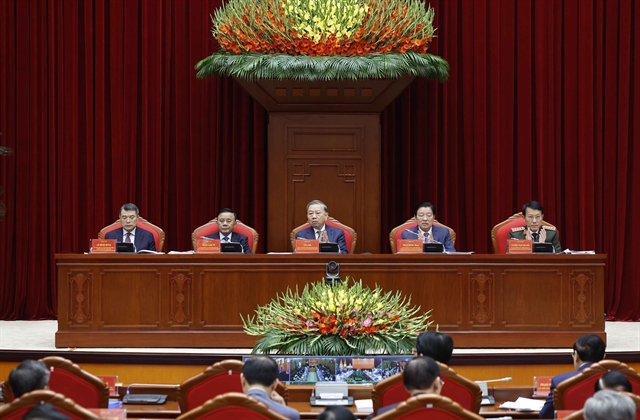 Economy
Economy

The localisation rate in Việt Nam is too low as the number of Vietnamese support industry businesses accounted for only three per cent of the country’s total, an official said.
 |
| Workers on an earphone production line for Samsung Electronics Việt Nam at the South-Korean-invested Glonics Việt Nam Company in Thái Nguyên Province. The localisation rate in Việt Nam is low compared with other countries. VNA/VNS Photo Hoàng Nguyên |
HÀ NỘI (VNS) — The localisation rate in Việt Nam - the percentage of a product locally made - is too low as the number of Vietnamese part supplying businesses accounted for only three per cent of the country’s total, Phan Đăng Tuất, former director of the Institute for Industrial Policy and Strategy said.
“We cannot build a part supplying industry with the limited firms,” Tuất , said.
He told a forum on developing the industry, titled ‘Opportunities from Free Trade Agreements (FTAs) to attract investment into industries’ held in Hà Nội yesterday that Việt Nam has 1,383 businesses operating as part suppliers out of a total 500,000 firms, divided into three groups of mechanic, electronics, rubber and plastic.
“Việt Nam should promote the building of a start-up model for companies in the sector. Ministries and agencies should study how to establish more firms in the industry,” he added.
Deputy Minister of Industry and Trade Hoàng Quốc Vượng said that under the tariff cut, Việt Nam would have opportunities to improve competitiveness and exports to both traditional and new import markets, on the road map in bilateral and multilateral FTAs with important partners.
Vượng said this would be an opportunity for Việt Nam to participate in global production and the supply chain while making Vietnamese industrial products more diversified.
Sharing ideas, Atsusuke Kawada, Chief Representative of Japan External Trade Organisation (JETRO), said the localisation rate in Việt Nam was much lower than in Thailand, Indonesia and Malaysia.
A report from JETRO showed that the purchase of spare parts of Japanese firms in Việt Nam last year was 32.1 per cent. The rate was higher than 22.4 per cent of 2010. However, it stayed the same with that of 2014.
However, the rate was lower than those of Japanese enterprises operating in China with 64.7 per cent, Thailand 55.5 per cent, Indonesia 40.5 per cent, and Malaysia 36 per cent.
He also said that the development of the part supplying industry has not seen clear improvement though the country has priorities in this sector and that of the small- and-medium-sized enterprises as well as a policy on human resource training.
He said that the priorities for part supply of household appliances, office machines and automobile industry have been extremely important.
The chief suggested expanding the production scale of automobile spare parts. In addition, the Government should have clear policies in supporting Vietnamese enterprises which produce office equipment such as printers, and household appliances such as refrigerators and washing machines.
Several big producers from Japan have relied on imported spare parts from China. Việt Nam could nurture businesses producing spare parts to reduce imports from China. – VNS




